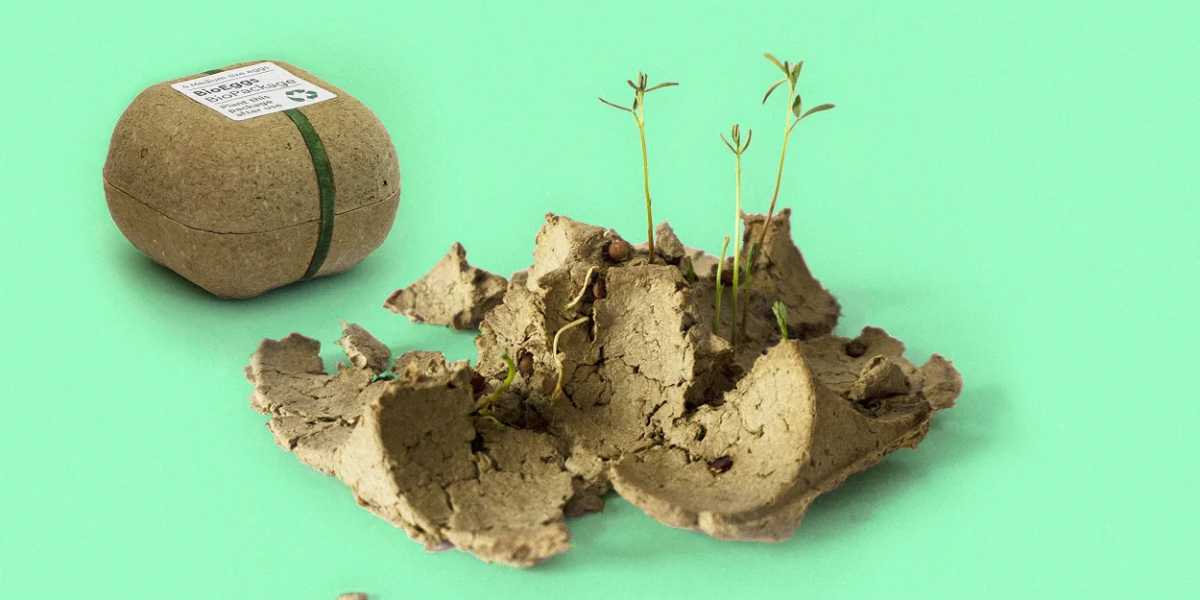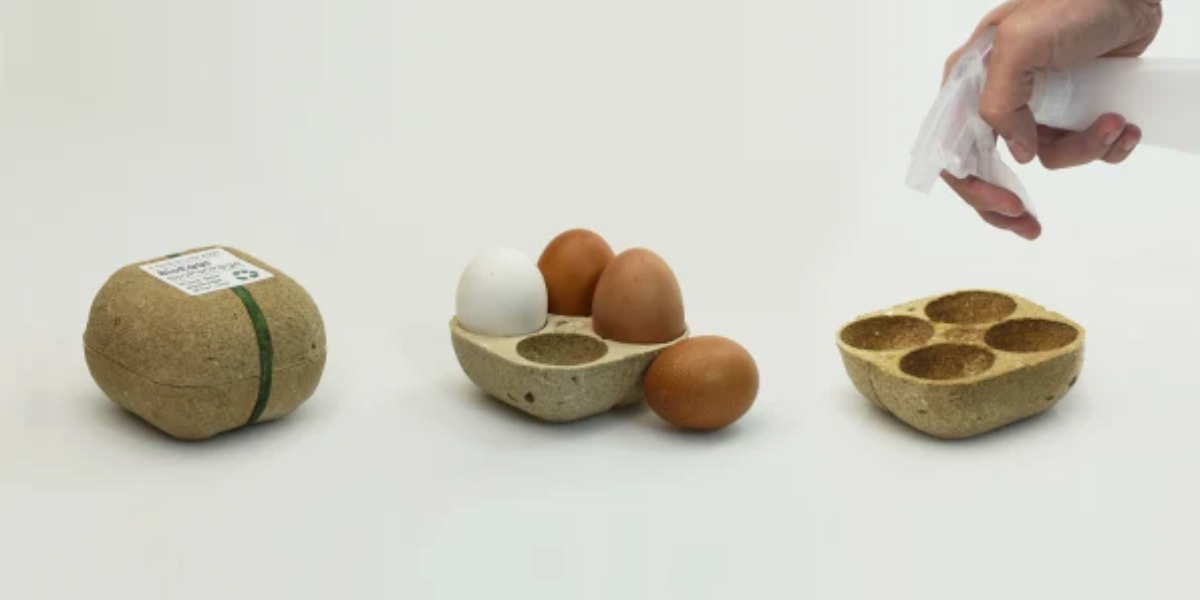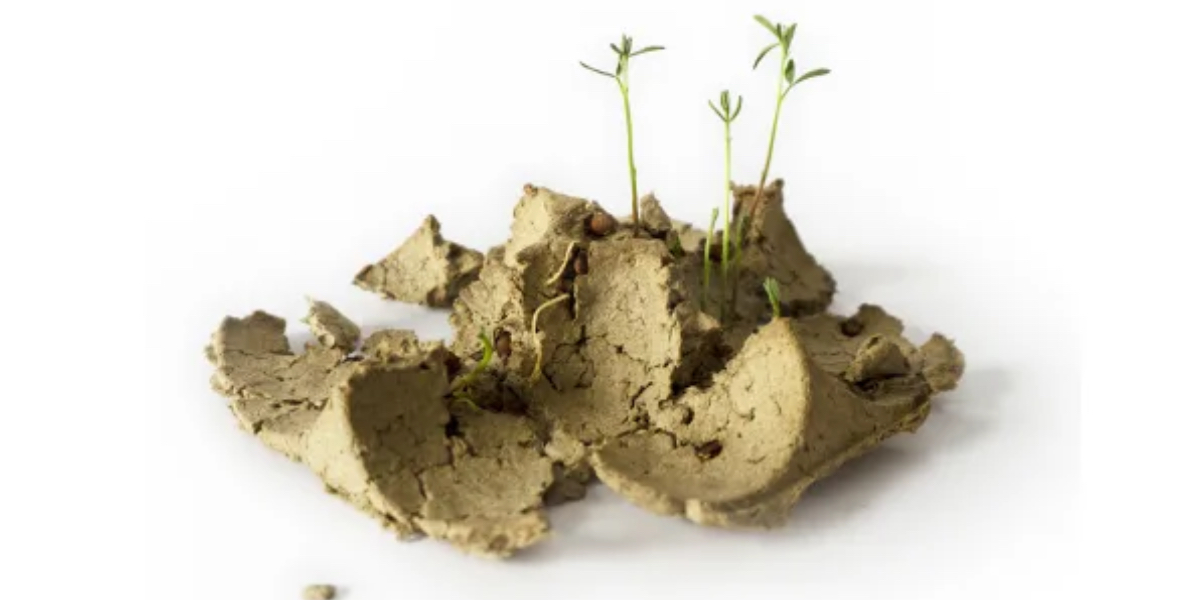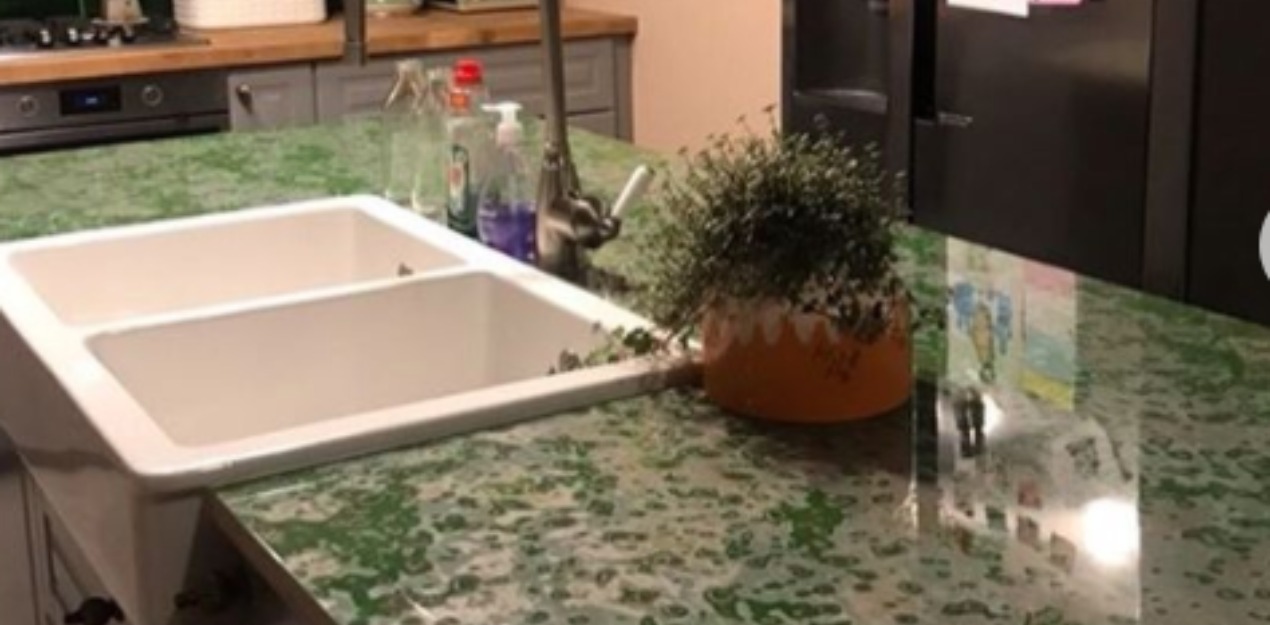AWARD YEAR
2023
CATEGORY
Home
GOALS
Sustainable Cities & Communities, Life On Land
KEYWORDS
biodegrable , Recycle Container, planting, Reuse, waste management
COUNTRY
Greece
DESIGNED BY
George Bosnas
WEBSITE
https://georgebosnas.com/portfolio/biodegrapak/
Biodegrapak
Regenerative Packaging: Turning Containers into Plants
How does it work?
Biodegrapak is a package designed to be ecological on every level. Consisting of cleared paper pulp, flour and starch and biological seeds. After using the packaging, for example an egg carton, instead of recycling or throwing it away, the user waters it or plants it so the seeds grow into green plants. The main idea and goal is to create a truly environmental friendly product.
Why is it needed?
The carton is designed to be planted in your backyard, where legume seeds embedded in the material can start to grow, improving soil health and helping the dirt sequester more carbon from the air.
“I chose legumes because they are used as nitrogen fertilizers in nature,” says Bosnas. The plants make the soil healthier.
“Recycling is important but costs money, time, and electricity,” says George Bosnas, the Greece-based designer who developed the concept for the Biopack. There are other problems in broken recycling systems: Occasionally, items that are picked up from recycling bins aren’t actually recycled, as in cities that struggled to adapt when China stopped importing low-quality recyclables. When they are recycled, they might be “downcycled” to a lower-grade material. While some startups work on trying to solve those problems, Bosnas saw an opportunity to bypass the recycling system completely.
How does it improve life?
Bosnas wanted to focus on a common item that often ends up in the trash. (In Greece, egg cartons are usually made from plastic; in the U.S., where cartons are often made from paper, someone with access to composting could compost a carton if they wanted to circumvent recycling.) The package is made from paper pulp, flour, starch, and legume seeds. After use, it’s meant to be planted in the ground and watered, and then the seeds will sprout.
Though Bosnas wasn’t specifically focused on climate change, his product can have an additional benefit: boosting the amount of carbon that is stored in the ground. Studies suggest that legumes can store 30% more carbon in soil than other plants. On farms, proponents of “regenerative agriculture”—who plant legumes among other methods to improve soil health—argue that these techniques are an important tool in fighting climate change. Most of that work has happen in backyards.







